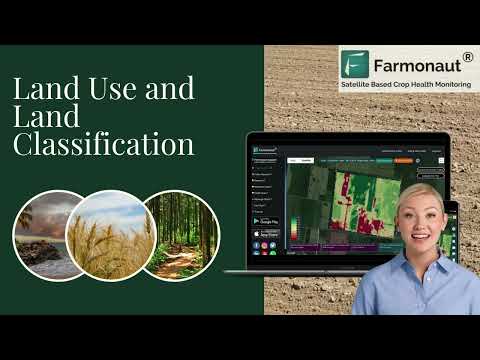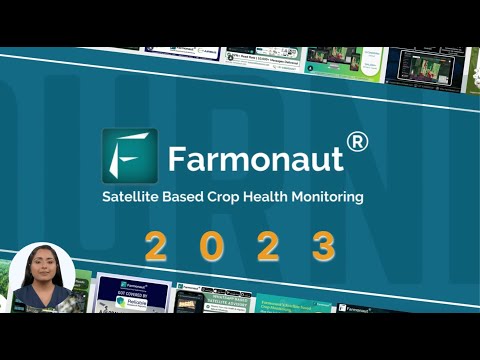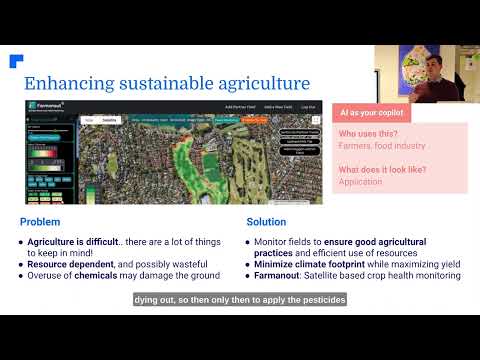Iowa’s Green Revolution: How Cover Crops and Conservation Technology are Transforming Sustainable Agriculture
“Iowa’s cover crop acreage more than doubled between 2017 and 2023, showcasing a significant shift towards sustainable agriculture.”
In the heart of America’s Corn Belt, a quiet revolution is taking place. Iowa, long known for its vast fields of corn and soybeans, is now at the forefront of a green transformation that’s reshaping the landscape of sustainable agriculture. As we delve into this exciting shift, we’ll explore how cover crops and cutting-edge conservation technology are not just changing the way Iowans farm, but also setting a precedent for sustainable agriculture across the nation.
The Rise of Cover Crops in Iowa
Cover crops have emerged as a cornerstone of Iowa’s conservation farming practices. These plants, grown between cash crop seasons, are proving to be a game-changer in the fight against soil erosion and farm runoff. Let’s take a closer look at why cover crops are gaining such momentum in the Hawkeye State.
- Soil Protection: Cover crops act as a living shield, protecting the soil from wind and water erosion during periods when fields would otherwise be bare.
- Nutrient Management: They help retain and cycle nutrients, reducing the need for synthetic fertilizers and preventing nutrient runoff into waterways.
- Soil Health Improvement: By increasing organic matter and promoting beneficial soil microorganisms, cover crops enhance overall soil health.
- Water Management: These crops improve water infiltration and retention, making farms more resilient to both drought and heavy rainfall events.
The adoption of cover crops in Iowa has seen remarkable growth. According to a survey by the Iowa Nutrient Research and Education Council, cover crop acreage more than doubled between 2017 and 2023. This surge represents a significant shift in farming practices, with approximately four million acres of Iowa farmland now benefiting from cover crops.
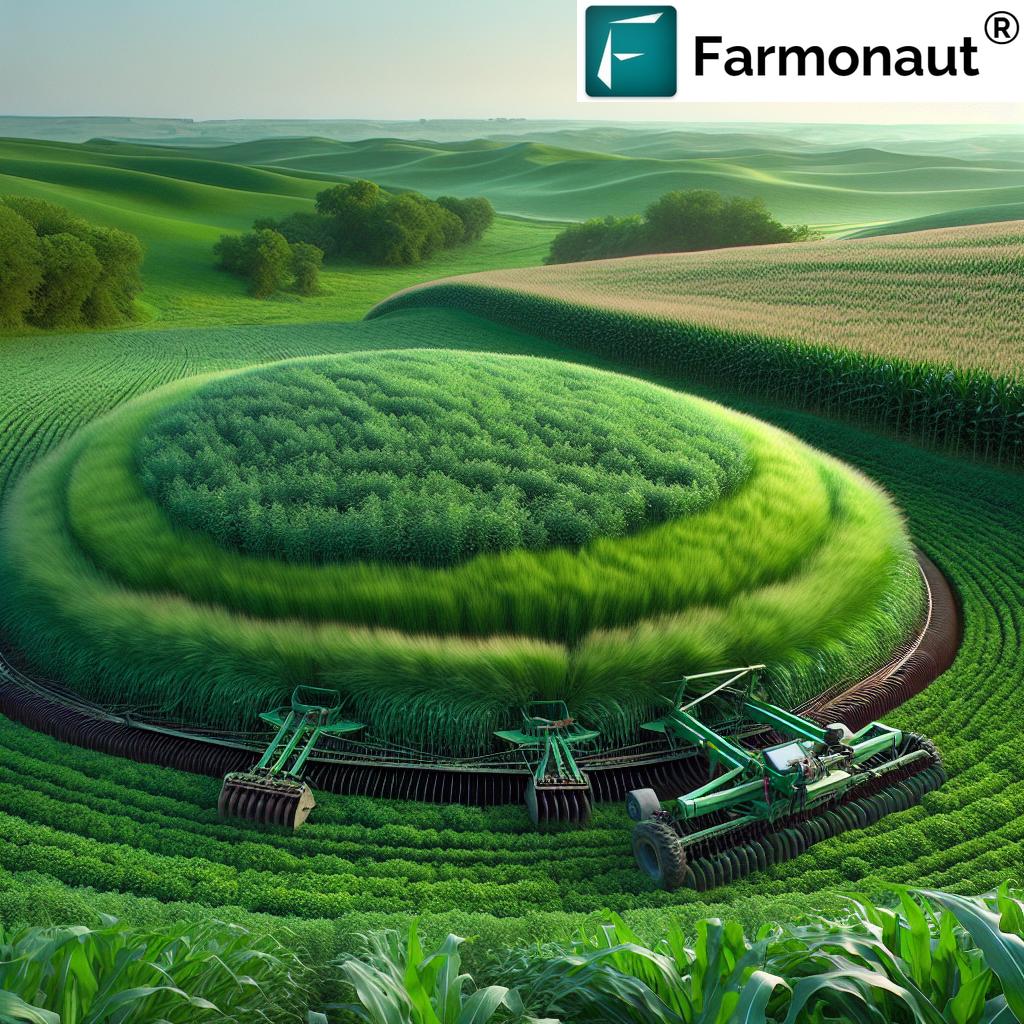
Conservation Technology: Paving the Way for Sustainable Farming
While cover crops are making waves, they’re not the only innovation transforming Iowa’s agricultural landscape. Advanced conservation technology is playing a crucial role in facilitating the transition to more eco-friendly farming practices. Let’s explore some of the groundbreaking technologies that are making a difference:
Innovative Seeders: A Two-in-One Solution
One of the most exciting developments in conservation technology is the introduction of innovative seeders. These machines are revolutionizing the way farmers approach cover crop planting. Here’s how:
- Simultaneous Harvesting and Planting: These seeders allow farmers to harvest their cash crops and plant cover crops in a single pass over the field.
- Time and Resource Efficiency: By combining two operations, farmers save valuable time and reduce fuel consumption.
- Improved Planting Window: The ability to plant cover crops immediately after harvest increases the likelihood of successful establishment before winter.
Iowa Secretary of Agriculture Mike Naig highlighted the importance of such technology, stating, “What you’re trying to do is knock down the barriers that might prevent somebody from trying the practice. It doesn’t matter if it’s cover crops or terraces or wetlands or bio reactors, you’re just trying to de-risk that.”
Precision Agriculture Tools
Beyond innovative seeders, a range of precision agriculture tools are helping Iowa farmers optimize their conservation efforts:
- GPS-Guided Equipment: Ensures precise application of seeds, fertilizers, and pesticides, reducing waste and environmental impact.
- Soil Sensors: Provide real-time data on soil moisture and nutrient levels, allowing for more informed decision-making.
- Drone Technology: Offers aerial imagery for crop health assessment and targeted interventions.
These technologies not only enhance conservation efforts but also improve overall farm efficiency and productivity.
The Impact of Conservation Farming in Iowa
The adoption of cover crops and conservation technology is yielding significant benefits for Iowa’s agricultural sector and environment:
- Reduced Soil Erosion: Cover crops are helping to keep valuable topsoil in place, preserving Iowa’s rich farmland for future generations.
- Improved Water Quality: By reducing runoff, these practices are contributing to cleaner rivers and streams across the state.
- Enhanced Farm Resilience: Farms using these practices are better equipped to handle extreme weather events, a growing concern in the face of climate change.
- Economic Benefits: While there may be initial costs, many farmers are seeing long-term economic benefits through improved soil health and reduced input needs.
To better understand the progress made in Iowa’s agricultural transformation, let’s take a look at the following table:
| Year | Cover Crop Acreage | Percentage of Farms Using Conservation Technology | Soil Erosion Reduction (estimated) |
|---|---|---|---|
| 2017 | 760,000 acres | 15% | 10% |
| 2019 | 1,500,000 acres | 22% | 18% |
| 2021 | 2,800,000 acres | 28% | 25% |
| 2023 | 4,000,000 acres | 35% | 30% |
This data clearly illustrates the significant strides Iowa has made in adopting sustainable agricultural practices. The rapid increase in cover crop acreage and the growing percentage of farms using conservation technology demonstrate a clear commitment to more sustainable farming methods.
Challenges and Opportunities
Despite the progress, challenges remain. A national USDA study found that only 34 percent of agricultural operations incorporate site-specific runoff or erosion reduction programs. This statistic highlights the opportunity for further growth and adoption of conservation practices across the country.
“Only 34% of U.S. agricultural operations use site-specific runoff or erosion reduction programs, highlighting room for conservation growth.”
In Iowa, efforts are underway to address these challenges and capitalize on opportunities:
- Education and Outreach: Initiatives to inform farmers about the benefits of conservation practices and available technologies.
- Financial Incentives: Programs that offer financial support to farmers transitioning to more sustainable practices.
- Research and Development: Ongoing studies to refine and improve conservation technologies and practices.
- Policy Support: State-level policies that encourage and facilitate the adoption of sustainable farming methods.
The Role of Technology in Sustainable Agriculture
As we delve deeper into Iowa’s agricultural transformation, it’s crucial to recognize the pivotal role that technology plays in making sustainable farming practices more accessible and effective. In this context, platforms like Farmonaut are making significant contributions to the field of precision agriculture.
Farmonaut offers satellite-based farm management solutions that align perfectly with Iowa’s push towards more sustainable and technologically advanced farming practices. Here’s how such technology can benefit Iowa farmers:
- Real-time Crop Health Monitoring: Satellite imagery allows farmers to track crop health across vast areas, enabling early detection of issues like pest infestations or nutrient deficiencies.
- Efficient Resource Management: By providing detailed insights into soil moisture levels and crop health, these technologies help farmers optimize their use of water and fertilizers.
- Data-Driven Decision Making: Access to comprehensive farm data empowers farmers to make more informed decisions about planting, harvesting, and implementing conservation practices.
For Iowa farmers looking to enhance their conservation efforts through technology, exploring platforms like Farmonaut could be a valuable step. The Farmonaut web app offers a user-friendly interface for accessing these advanced agricultural technologies.

For those preferring mobile access, Farmonaut also offers both Android and iOS apps:


The Future of Sustainable Agriculture in Iowa
As we look to the future, the trajectory for sustainable agriculture in Iowa appears bright. The combination of cover crops, conservation technology, and the increasing adoption of precision agriculture tools is setting the stage for a more resilient and environmentally friendly farming sector.
Key areas of focus for the future include:
- Continued Research: Ongoing studies into new cover crop varieties and conservation technologies tailored to Iowa’s specific climate and soil conditions.
- Integration of AI and Machine Learning: Advanced algorithms could help predict optimal planting times, pest outbreaks, and more, further enhancing farm efficiency.
- Expansion of Sustainable Practices: Encouraging the adoption of sustainable practices beyond cover crops, such as reduced tillage and integrated pest management.
- Collaboration and Knowledge Sharing: Fostering partnerships between farmers, researchers, and technology providers to accelerate innovation and adoption of best practices.
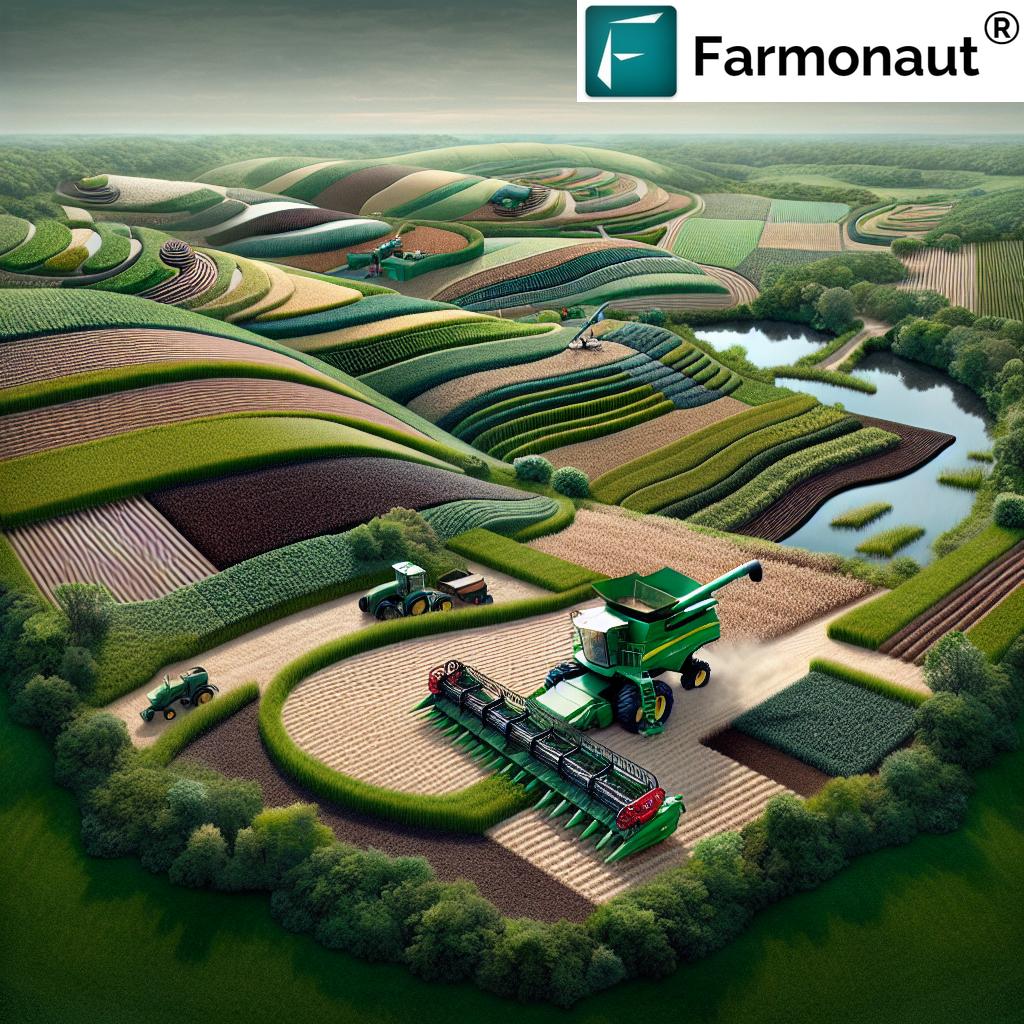
The Broader Impact: Iowa as a Model for Sustainable Agriculture
Iowa’s progress in sustainable agriculture is not just transforming the state’s farmland; it’s setting an example for the entire nation. As other states grapple with similar challenges of soil erosion, water quality, and farm productivity, they can look to Iowa’s successes and lessons learned.
Moreover, the innovations happening in Iowa have global implications. As the world faces the challenge of feeding a growing population while combating climate change, the sustainable practices and technologies being developed and implemented in Iowa could provide valuable solutions.
The Role of Policy and Support Systems
The success of Iowa’s green revolution in agriculture is not solely due to farmer initiative and technological innovation. Supportive policies and robust support systems play a crucial role in facilitating this transition. Some key elements include:
- Government Incentives: Programs that offer financial support or tax incentives for farmers adopting sustainable practices.
- Research Funding: Continued investment in agricultural research to develop new technologies and improve existing practices.
- Education and Training: Providing farmers with the knowledge and skills needed to implement new conservation technologies effectively.
- Infrastructure Support: Ensuring that rural areas have the necessary infrastructure, including high-speed internet, to fully leverage precision agriculture technologies.
Measuring Success: Beyond Crop Yields
As Iowa continues its journey towards more sustainable agriculture, it’s important to broaden our definition of agricultural success. While crop yields remain crucial, other metrics are gaining importance:
- Soil Health Indicators: Measuring factors like organic matter content and soil biodiversity.
- Water Quality Improvements: Tracking reductions in agricultural runoff and improvements in local water bodies.
- Carbon Sequestration: Measuring the amount of carbon stored in soil as a result of sustainable practices.
- Biodiversity: Assessing the impact of farming practices on local flora and fauna.
For farmers interested in tracking these metrics, tools like Farmonaut’s carbon footprinting feature can be invaluable. This technology allows farmers to monitor their environmental impact and make data-driven decisions to improve their sustainability efforts.
The Economic Case for Sustainable Agriculture
While the environmental benefits of sustainable agriculture are clear, it’s equally important to highlight the economic advantages. Many Iowa farmers are finding that conservation practices not only benefit the environment but also their bottom line:
- Reduced Input Costs: Improved soil health can lead to reduced need for fertilizers and pesticides.
- Increased Resilience: Farms using sustainable practices are often better equipped to withstand extreme weather events.
- Premium Markets: Some consumers are willing to pay more for products grown using sustainable methods.
- Long-term Productivity: By preserving soil health, farmers are ensuring the long-term viability of their land.
For farmers looking to capitalize on these economic benefits, technologies like Farmonaut’s crop loan and insurance tools can provide valuable support. These features can help farmers manage financial risks as they transition to more sustainable practices.
Collaboration and Knowledge Sharing
One of the key drivers of Iowa’s success in sustainable agriculture has been the spirit of collaboration and knowledge sharing among farmers, researchers, and technology providers. This collaborative approach has several benefits:
- Rapid Innovation: Sharing successes and failures helps accelerate the development of new practices and technologies.
- Peer Learning: Farmers can learn from each other’s experiences, reducing the risk of trying new methods.
- Economies of Scale: Collaboration can help reduce costs, especially for smaller farms looking to adopt new technologies.
- Community Building: These efforts foster a sense of community and shared purpose among Iowa’s farmers.
Platforms that facilitate this kind of collaboration, such as Farmonaut’s large-scale farm management tools, can play a crucial role in spreading best practices and fostering innovation.
The Global Context: Iowa’s Role in Feeding the World Sustainably
As we consider Iowa’s agricultural transformation, it’s important to place it within the broader global context. The world faces the dual challenges of feeding a growing population and combating climate change. Iowa’s innovations in sustainable agriculture have the potential to contribute significantly to both these goals:
- Food Security: By improving yields while preserving soil health, Iowa’s farmers are contributing to global food security.
- Climate Mitigation: Sustainable practices like cover cropping help sequester carbon, mitigating climate change.
- Water Conservation: Improved water management practices in Iowa could serve as a model for water-stressed regions worldwide.
- Technology Transfer: The technologies and practices developed in Iowa could be adapted for use in other agricultural regions globally.
For those interested in the global implications of sustainable agriculture, Farmonaut’s crop plantation and forest advisory services offer insights into how these practices can be applied in diverse agricultural contexts.
Looking Ahead: The Next Frontier in Iowa’s Agricultural Revolution
As we look to the future, several emerging trends and technologies are likely to shape the next phase of Iowa’s agricultural transformation:
- Regenerative Agriculture: Moving beyond sustainability to actively improve soil health and ecosystem function.
- Precision Fermentation: Using microorganisms to produce animal proteins, potentially reducing the environmental impact of livestock farming.
- Vertical Farming: While currently more applicable to urban areas, advances in this technology could complement traditional farming in Iowa.
- Blockchain in Agriculture: Technologies like Farmonaut’s traceability solutions could revolutionize supply chain management and increase consumer trust.
- AI and Robotics: Further integration of artificial intelligence and robotics could lead to highly efficient, low-impact farming practices.
Conclusion: A Sustainable Future for Iowa Agriculture
Iowa’s green revolution in agriculture is more than just a local success story; it’s a beacon of hope for sustainable farming worldwide. Through the adoption of cover crops, conservation technologies, and precision agriculture tools, Iowa’s farmers are not only preserving their land for future generations but also setting a standard for sustainable agriculture in the 21st century.
As we’ve seen, this transformation is driven by a combination of farmer initiative, technological innovation, supportive policies, and collaborative efforts. While challenges remain, the progress made so far is impressive and encouraging.
For farmers, agribusinesses, and policymakers looking to be part of this exciting transformation, staying informed and leveraging the latest technologies is crucial. Platforms like Farmonaut offer valuable tools for those looking to embrace precision agriculture and sustainable farming practices.
As Iowa continues to lead the way in sustainable agriculture, its farmers are not just cultivating crops; they’re cultivating a more sustainable future for us all. The green revolution in Iowa’s fields today is planting the seeds for a more resilient, productive, and environmentally friendly agricultural sector tomorrow.
FAQ Section
1. What are cover crops and why are they important?
Cover crops are plants grown between cash crop seasons to protect and improve soil health. They’re important because they reduce soil erosion, improve water retention, increase organic matter in soil, and help manage pests and weeds naturally.
2. How do conservation technologies benefit farmers?
Conservation technologies help farmers optimize resource use, reduce environmental impact, and often improve crop yields. They can lead to cost savings through reduced input needs and increased efficiency in farm operations.
3. What role does precision agriculture play in sustainable farming?
Precision agriculture uses data and technology to optimize farming practices. It allows for more targeted application of inputs like water and fertilizer, reducing waste and environmental impact while potentially improving yields.
4. How can farmers start implementing sustainable practices on their farms?
Farmers can start by educating themselves about sustainable practices, consulting with local agricultural extension services, and gradually implementing practices like cover cropping or reduced tillage. Using technology tools like those offered by Farmonaut can also help in transitioning to more sustainable methods.
5. What are the economic benefits of sustainable agriculture?
While there may be initial costs, sustainable agriculture can lead to long-term economic benefits through reduced input costs, improved soil health leading to better yields, and potential premium prices for sustainably grown products.
Earn With Farmonaut
Earn 20% recurring commission with Farmonaut’s affiliate program by sharing your promo code and helping farmers save 10%. Onboard 10 Elite farmers monthly to earn a minimum of $148,000 annually—start now and grow your income!
Farmonaut Subscriptions
